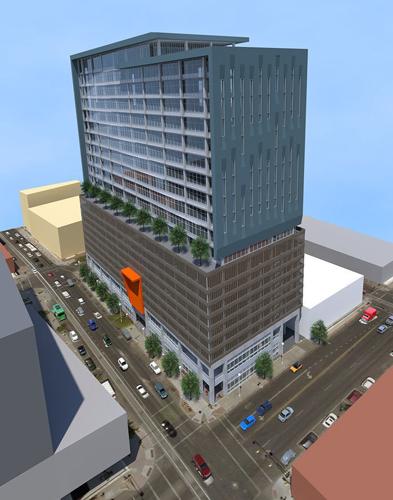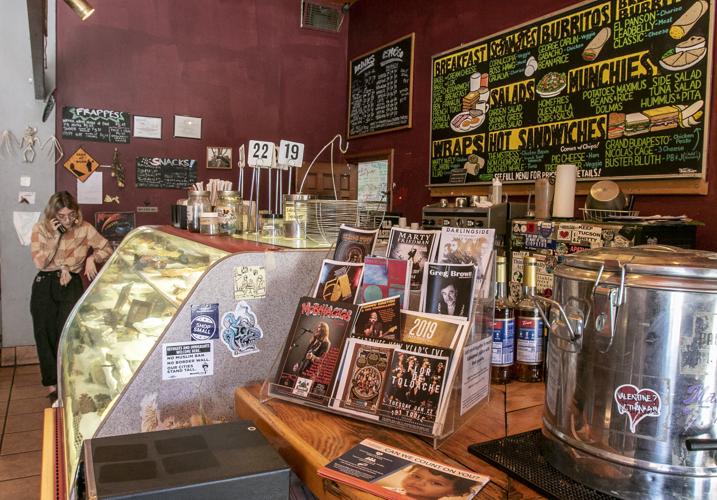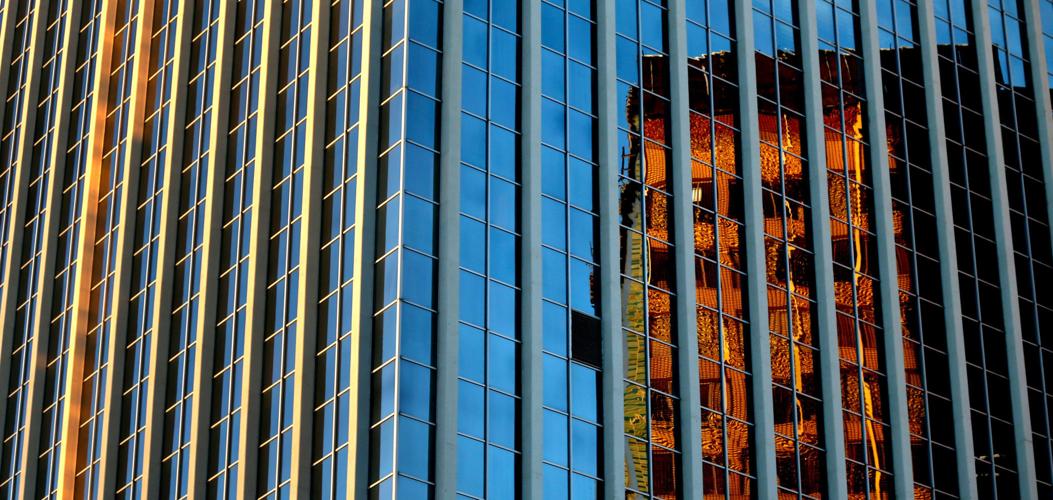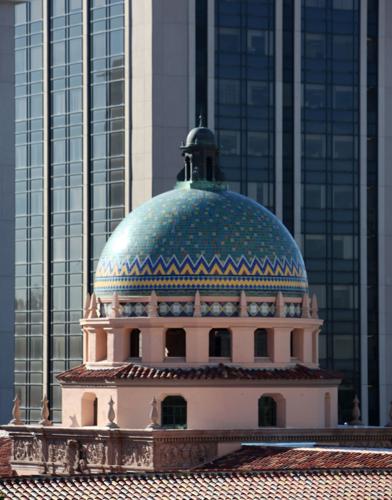You have to wonder if, five years from now, there will be any place for scruffy businesses downtown, stores and restaurants that don’t cater to moneyed people.
I’m not particularly mourning the impending demise of the Shot in the Dark Cafe, which announced last week it will close because the cooperative coffee shop can’t afford a large rent increase. On a cool, gray day last week, I bought a cup of black tea there, and the water wasn’t even hot enough to make the tea steep. Clearly it’s a marginal business.
But I don’t like the idea that some day in coming years all the restaurants downtown will serve $25-a-plate entrees, and all the cups of coffee, or tea, will cost $5.
Yes, there is some inevitability to this trend. You can’t develop a downtown without the property values going up, which leads to higher rents for the stores and restaurants, which leads to higher prices charged by the proprietors. That’s natural.
But there is a particular mechanism of our downtown development that I’m starting to wonder about — tax incentives. Almost all the projects that have occurred downtown have happened with the benefit of tax incentives offered by the city of Tucson or the Rio Nuevo district.
They have been essential to landing companies like Caterpillar and to building projects like the first new hotel in eons, the AC Marriott. Numerous other projects are under construction or in the pipeline that also take advantage of incentives — apartments and hotels and offices and multiuse structures. It’s an incentive-fueled bonanza downtown.
No doubt, that was necessary in the beginning of the boom. But I question whether these incentives really remain necessary now, with hundreds of new apartments built or under construction, a variety of hotels going up, and even an office tower under construction. And I worry that the incentives are helping accelerate the increase in property values, turning marginal businesses serving working-class people into unsustainable failures.
There’s no doubt the owners of these businesses are feeling the pressure.
The Iguana Cafe is an outlier on Congress, where you can’t get a fancy meal, where the clientele downs beers at lunchtime, and where the speakers are usually blasting country western or norteño music. Owner Jesus Padilla told me Friday that he’s survived for 15 years, including the tough years during streetcar construction, but is looking warily ahead to the end of his lease in July.
“In reality, I’m doing OK, because they haven’t raised my rent a lot,” Padilla said.
But we’ll see what happens come July.
Around the corner at 14K Jewelers, Paul Peck mans a tiny shop that is a throwback to an earlier era. He sells some inexpensive jewelry, but mostly survives by doing repairs. He takes in repairs from several pawnshops around town.
“If I had to live off of what was walking in the door, I’d already be out of business,” he said. “Last year I almost closed. This year is much better.”
“If you’re not a bar or a restaurant down here, it’s hard to make it,” he said. “It’s what the city’s done that’s changed it to what it is.”
Now, I can’t say that “what the city’s done” has overall been a bad thing. As Picor broker and Tucson native Greg Furrier told me Friday, he never in his life thought he would see downtown as alive as it is now. So, between the Rio Nuevo district and the city, it’s mostly credit that should be spread around, not blame.
However, the incentive programs that helped create downtown’s rebirth also inevitably distort the market. When the city approved $6.7 million in tax incentives for the AC Marriott, that not only ensured Tucson’s first new hotel downtown in ages would be built, but also that property values in nearby buildings would increase.
The owner of the Shot in the Dark property, an old brick building next door to the new hotel, began gradually raising the rent from the longstanding $1,100 per month to what was eventually going to be $4,400 per month. The coffee shop, which is open 24 hours per day, 7 days a week and caters to a relatively poor crowd, couldn’t make it past the first step, to $2,200 per month.
The types of incentives offered to new developments downtown vary and overlap, and can even be used in conjunction with one another. Rio Nuevo offers tax abatements and rebates, rent subsidies, build-and-lease programs and other incentives.
I asked Rio Nuevo board Chair Fletcher McCusker about the district’s use of incentives Friday on the Bill Buckmaster radio show.
“J.E. Dunn would not be here except for some of the incentives we’ve provided them,” McCusker said, citing the new 12-story office building going up across the street from Tucson Electric Power on East Broadway downtown. “We’re in the incentive business till we’ve maxed out our geography.”
The city of Tucson has an Infill Incentive District, a Downtown Financial Incentive District and a Government Property Lease Excise Tax district, all of which overlap one another and provide different options for promoting developments downtown.
They don’t apply only to new developments and have been used to help some existing businesses expand or move, as well as facilitating big new projects. That’s good and perhaps should become an increasing focus of incentives.
City Councilman Steve Kozachik, who represents most of downtown and North Fourth Avenue, said the time of widespread incentives for development may be ending.
“When we were coming out of the recession, and we had vacant land and empty storefronts, at that time, the incentives were an appropriate way to spur the growth and pull us out of a recession,” he said.
Now, Kozachik went on, “We have reached that tipping point. The market is such that lending institutions are looking at things other than student housing.”
City Councilwoman Regina Romero, who represents the west side and is running for mayor, noted that the council held a public hearing on the Infill Incentive District Tuesday, where many of these issues were hashed out, such as the need to adjust incentive districts as changes happen.
“If we see it’s moving in great speed on its own, naturally, it doesn’t need incentives anymore. We should consider moving that map to see where we do need development to happen.”
That’s where I see things downtown now. Incentives have helped accelerate development — generally a great thing, but hard if you run a small business that doesn’t cater to people from the comfortable middle-class on up. It’s time to start weaning developers off these incentives, unless they are offering us something unique and needed, not just another stack of apartments.
Still, I see the point McCusker made when I asked him on Buckmaster about downscale businesses disappearing among downtown’s boom.
“It’s a mixed blessing for sure. When Providence (McCusker’s old company) moved downtown in 2010, you could rent anything around us for six bucks per square foot. Now it starts at $27 per square foot. It’s substantially more expensive to be downtown. That requires a higher revenue rate, a higher per-meal cost. The smaller cafes, the diners aren’t going to survive in that kind of environment.
“Hopefully what happens is as downtown becomes more robust, that the fringes pick up some of these things, places like Five Points, and north on Stone (Avenue) and even east on Broadway. So you still have, within walking distance, some lower-priced options. But downtown proper is going to become San Diego. You can see it heading in that direction.”
All I ask is that if that’s inevitable, we don’t hurry the process but let it happen naturally.








